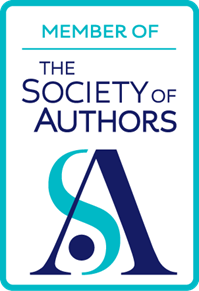fake news by Terry Freedman
I’ve written quite a bit about fake news — see, for example, Book Review: Critical Media Literacy And Fake News In Post-Truth America and the article 16 Articles And Resources About Fake News. And there’s a conference about fake news which comes up every year, and is always very good.It’s on again in March 2022. See the agenda, and book up if you wish.
However, much of the narrative about fake news seems to take the view that fake news is peddled by outlets other than mainstream media, that if mainstream media do produce fake news it’s either accidental or because the “journalism” is rubbish, and that basically it’s up to the rest of us to make sure we’re not fooled. In other words, it’s the doctrine of caveat emptor (let the buyer beware) applied to the news.
However, I do think that we’re entitled to be able to assume that the reportage carried out by mainstream newspapers etc is accurate, at least as far as basic facts are concerned (the spin that is put on those facts are a different matter). But then you get a newspaper (in the UK) telling us that Kyle Rittenhouse shot three black people. How could anyone make that kind of error? Don’t they bother with fact-checking any more? Perhaps, to be charitable, it’s because there are fewer and fewer journalists working on more and more articles. A research report a couple of years ago found that some journalists were working on 50 to 75 articles a week, rising to 500 for some editors*.
I like to try and give people the benefit of the doubt, but is that always the right approach? Ambrose Bierce defined a cynic as someone who sees things as they are, and not as they ought to be. I’m coming more and more to the conclusion that as far as how much we believe many news outlets is concerned, he was right.
I was thinking about this today because I found out about this book: How Woke Media Is Undermining Democracy By Batya Ungar-Sargon. Its focus is on American journalism, but I’d not be surprised if it’s findings apply here in the UK and elsewhere too. Take this, for instance, from the publisher’s blurb:
With the rise of the internet and the implosion of local news, America’s elite news media became nationalized and journalists academic and ideological. And where once business concerns provided a countervailing force to push back against journalists’ worst tendencies, the pressures of the digital media landscape now align corporate incentives with newsroom crusades.
— ENCOUNTER BOOKS
This is why it’s imperative to teach students to fact check the news they consume, in ways such as the ones suggested in the article Fact or fiction? How to check the news. And also, of course, why we writers and journalists need to be on the alert as far as reputed facts are concerned.
However, I don’t think this is anything new. One of the exercises I used to run when I taught Economics was a simulation called Strike! Some of the class took on the role of union reps, and some took on the role of company bosses. The premise was that the unions wanted a massive pay rise, or they would threaten to strike. The bosses’ role was to reach a compromise if they could.
To add a bit more spice, I had some of the class acting as newspaper reporters. Half were from right-wing newspapers, the others were from left-wing ones. They were told that they had to report the facts accurately, but how they reported the basic facts was up to them.
Of course, when the compromise was reached, such as half the pay rise being granted in return for shorter holidays, the left-wing headlines became “Bosses forced to cave in as workers triumph over their greed!”, while the right-wing headlines were along the lines of “Union forced into humiliating climb-down as their holidays are cut!”
The details of the compromise were reported accurately, but of course by the time you got to them the damage was done. As was reported a few years ago, research** has shown that the headline of an article not only colours how you read the article, but even what you remember from it.
This exercise was a real eye-opener for the students, because it showed them how you can change the narrative without actually lying. They couldn’t believe that their positions had been so dishonestly presented. Which, if you think about it, is an interesting paradox: accurate reporting of the facts, but dishonestly representing those facts.
Caveat emptor indeed.
* I’ve written about this in my preface to Enhancing Learning and Teaching with Technology: What the Research Says, but for the direct reference see Journalists in the UK.
** Also in that preface, but again, read the research for yourself at How Headlines Change the Way We Think.


